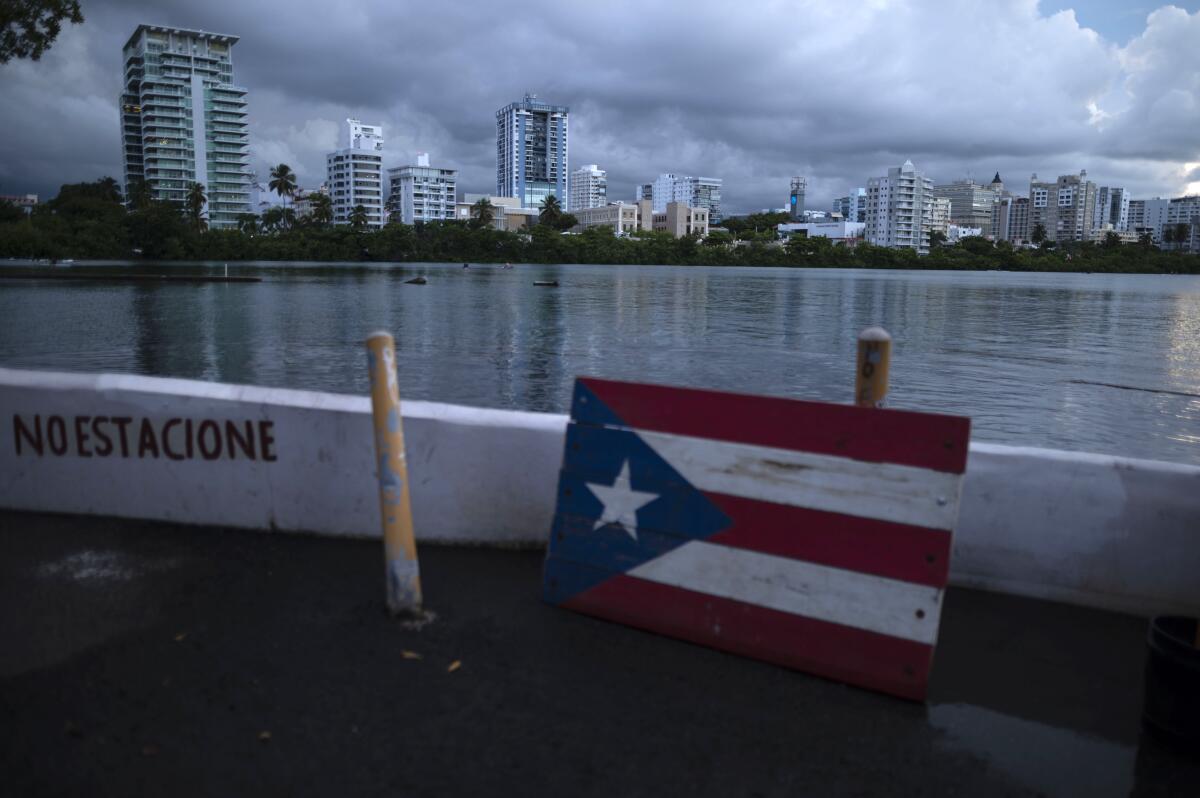Puerto Rico ponders race amid surprising census results

- Share via
SAN JUAN, Puerto Rico — The number of people in Puerto Rico who identified as “white” in the most recent census plummeted almost 80%, sparking a conversation about identity on an island breaking away from a past where race was not tracked and seldom debated in public.
The drastic drop surprised many, and theories abound as the U.S. territory’s 3.3 million people begin to reckon with racial identity.
“Puerto Ricans themselves are understanding their whiteness comes with an asterisk,” said Yarimar Bonilla, a political anthropologist and director of the Center for Puerto Rican Studies at Hunter College in New York. “They know they’re not white by U.S. standards, but they’re not Black by Puerto Rico standards.”
Nearly 50% of those represented in the 2020 census — 1.6 million of 3.29 million — identified with “two races or more,” a jump from 3% — or some 122,200 of 3.72 million — who chose that option in the 2010 census. Most of them selected “white and some other race.”
Meanwhile, more than 838,000 people identified as “some other race alone,” a nearly 190% jump compared with some 289,900 people a decade ago, although Bonilla said Census Bureau officials have yet to release what races they chose. Experts believe people likely wrote “Puerto Rican,” “Hispanic” or “Latino,” even though federal policy defines those categories as ethnicity, not race.
Among those who changed their response to race was 45-year-old Tamara Texidor, who selected “other” in 2010 and this time opted to identify herself as “Afrodescendent.” She said she made the decision after talking to her brother, who was a census worker and told her how people he encountered when he went house to house often had trouble with the question about race.
Texidor began reflecting about her ancestry and wanted to honor it since she descended from slaves on her father’s side.
“I’m not going to select ‘other,’” she recalled thinking when filling out the census. “I feel I am something.”
Experts are still debating what sparked the significant changes in the 2020 census. Some believe several factors are at play, including tweaks in wording and a change in how the Census Bureau processes and codes responses.
Bonilla also thinks a growing awareness of racial identity in Puerto Rico played a part, saying that “extra intense racialization” in the past decade might have contributed. She and other anthropologists argue that change stemmed from anger over what many consider a botched federal response to a U.S. territory struggling to recover from Hurricane Maria and a crippling economic crisis.
“They’ve finally understood that they’re treated like second-class citizens,” Bárbara Abadía-Rexach, a sociocultural anthropologist, said of Puerto Ricans.
Another critical change in the 2020 census was that only a little over 228,700 identified solely as Black or African American, a nearly 50% drop compared with more than 461,000 who did so a decade ago. The decline occurred even as grass-roots organizations in Puerto Rico launched campaigns to urge people to embrace their African heritage and raised awareness about racial disparities, although they said they were encouraged by the increase in the “two or more races” category.
Bonilla noted Puerto Rico currently has no reliable data to determine whether such disparities have occurred during the pandemic, noting that there are no racial data on coronavirus testing, hospitalizations or fatalities.
The island’s government also does not collect racial data on populations, including those who are homeless or incarcerated, Abadía-Rexach added.
“The denial of the existence of racism renders invisible, criminalizes and dehumanizes many Black people in Puerto Rico,” she said.
The lack of such data could be rooted in Puerto Rico’s history. From 1960 to 2000, the island conducted its own census and never asked about race.
“We were supposed to be all mixed and all equal, and race was supposed to be an American thing,” Bonilla said.
Some argued at the time that Puerto Rico should be tracking racial data while others viewed it as a divisive move that would impose or harden racial differences, a view largely embraced in France, which does not collect official data on race or ethnicity.
For Isar Godreau, an anthropologist and professor at the University of Puerto Rico, that type of data is crucial.
“Skin color is an important marker that makes people vulnerable to more or less racial discrimination,” she said.
The data help people fight for racial justice and determine the allocation of resources, Godreau said.
The major shift in the 2020 census — especially how only 560,592 people identified as white versus more than 2.8 million in 2010 — comes amid a growing interest in racial identity in Puerto Rico, where even recent surveys about race prompted responses including “members of the human race,” “normal” and “I get along with everyone.” Informally, people on the island use a wide range of words to describe someone’s skin color, including “coffee with milk.”
That interest is fueled largely by a younger generation: They have signed up for classes of bomba and plena — centuries-old, percussion-powered musical traditions — as well as workshops on how to make or wear headwraps.
More hair salons are specializing in curly hair, eschewing the blow-dried results that long dominated professional settings in the island. Some legislators have submitted a bill that cites the results of the 2020 census and that if approved would make it illegal to discriminate against someone based on their hair style. Several U.S. states already have similar laws.
As debate continues on what sparked so many changes in the 2020 census, Bonilla said an important question is what the 2030 census results will look like. “Will we see an intensification of this pattern, or will 2020 have been kind of a blip moment?”
More to Read
Sign up for Essential California
The most important California stories and recommendations in your inbox every morning.
You may occasionally receive promotional content from the Los Angeles Times.













